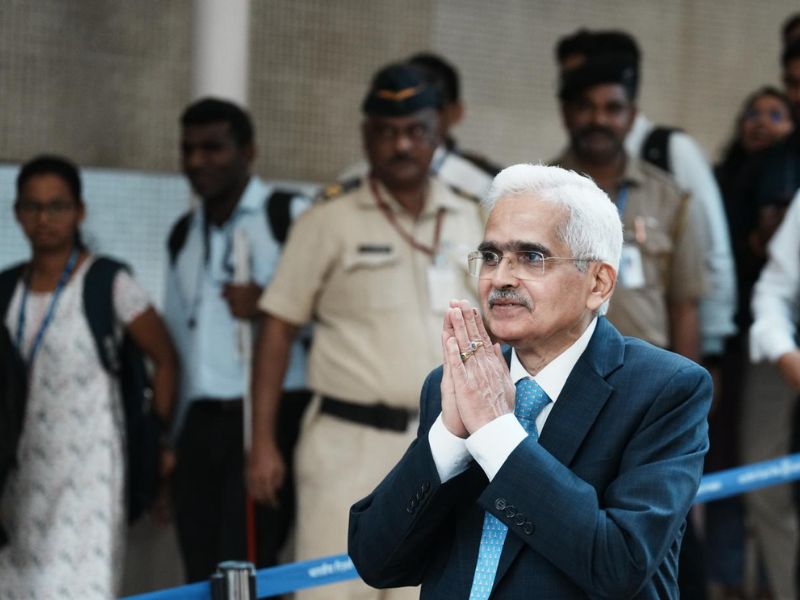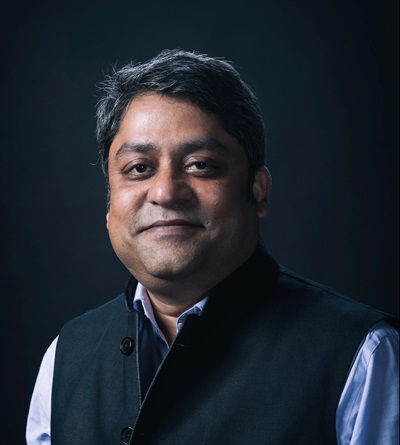.png)
Das Tasked To Sherpa PMO, Tackle India's Formidable Economic Challenges
Once an unlikely choice, Shaktikanta Das turned scepticism into global acclaim during his RBI tenure. Now stepping into the PMO, Das is set to navigate India’s most formidable economic challenges and may soon replace a long-time PMO stalwart.


Rajesh Mahapatra, ex-Editor of PTI, has deep experience in political and economic journalism, shaping media coverage of key events.
February 23, 2025 at 6:23 AM IST
The appointment of former Reserve Bank of India Governor Shaktikanta Das as Principal Secretary - 2 in the Prime Minister’s Office on Saturday underscores Prime Minister Narendra Modi’s intent to strengthen his core team’s ability to navigate the country's economic challenges.
It also signals a change of guard at the government’s most powerful arm of decision-making, with insiders suggesting Das may eventually take over from Pramod Kumar Mishra, who has been one of Modi’s most trusted aides for decades and his principal secretary since September 2019.
According to people familiar with the development, 76-year-old Mishra, popularly called PK, has wanted to step down for some time, and there couldn’t be a better fit than Das for this powerful position in the government. Das turns 68 next week.
A top-level retired bureaucrat still actively offering counsel to the highest levels of the government said, “Das has earned the confidence of the Prime Minister, and Mishra has been sort of a mentor to him in recent years.”
Das, like Mishra, is a native of Odisha. With his appointment on Saturday, the number of Odias in PM’s core team has risen to four – the other two being Additional Secretary Subhasish Panda and Director Rajesh Kumar Sahu.
“In six months to one year, you could see Das taking over from PK,” says the top-level ex-bureaucrat. “Das is the right man at the right place and at the right time.”
A history graduate from New Delhi’s prestigious St Stephen’s College, the Tamil Nadu cadre IAS officer moved to the Centre as the revenue secretary in the finance ministry soon after Modi became Prime Minister in May 2014. A year later, he was appointed secretary in the Department of Economic Affairs, a position he kept until his retirement in 2017.
When the government decided to scrap high-value currency notes in November 2016, causing economy-wide chaos and disruptions, Das had to shoulder much of the burden of executing and defending the decision.
His handling of demonetisation came in for sharp criticism from policymakers and politicians for being ad-hoc and ill-informed, but it also earned him the confidence of the Prime Minister.
Post retirement, he was appointed a member of the 15th Finance Commission and India’s Sherpa at G20.
A year and a half later, in December 2018, the government picked him to spearhead the Reserve Bank of India when the then-governor Urjit Patel abruptly left the central bank. Das served two straight terms that ended in December, making him the only RBI governor besides Bimal Jalan to have achieved this.
That a person who has never studied economics was picked to become the RBI governor raised many eyebrows. Through his two terms, however, Das proved his sceptics wrong. He not only earned the respect of the hardwired economists at the central bank but was highly successful in bolstering RBI’s image as a public-facing institution.
Das was ranked the top central banker of the year two consecutive times by reputed Global Finance Magazine for 2022-23 and 2023-24, a testament to his successful leadership during the challenging COVID years and after
His critics, however, argued that his strategy of not letting the rupee adjust to the dollar was flawed. Many have also argued that he should have steered the MPC into cutting rates at least six months earlier, and he was needlessly hawkish when inflation was being driven by food prices, where money supply or interest rates have no role to play.
The MPC slashed the repo rate earlier this month.
In his new role, which is a cabinet minister’s rank, Das will be tested for his ability to help the government navigate the economic challenges facing the country. He will be the PMO’s points person for both the finance ministry and the RBI, keeping a close tab on decisions made there – a job that will be useful given his past stints.
A key challenge will be to kickstart government spending on infrastructure and other capital projects, which has lately slackened while keeping fiscal consolidation on track. The Prime Minister will also be leaning on his expertise in dealing with trade wars sparked by US President Donald Trump, rupee volatility and the slowing of the broader economy.
But the real test of Das will lie in how well he steps into Mishra’s shoes if he eventually does. Mishra’s responsibility also included managing all key appointments in the government and political interface of the PMO. Das has no experience handling either of these, just as he had no exposure to monetary policy issues before becoming the governor of RBI.
His stint at RBI shows that Das can easily traverse steep learning curves.



